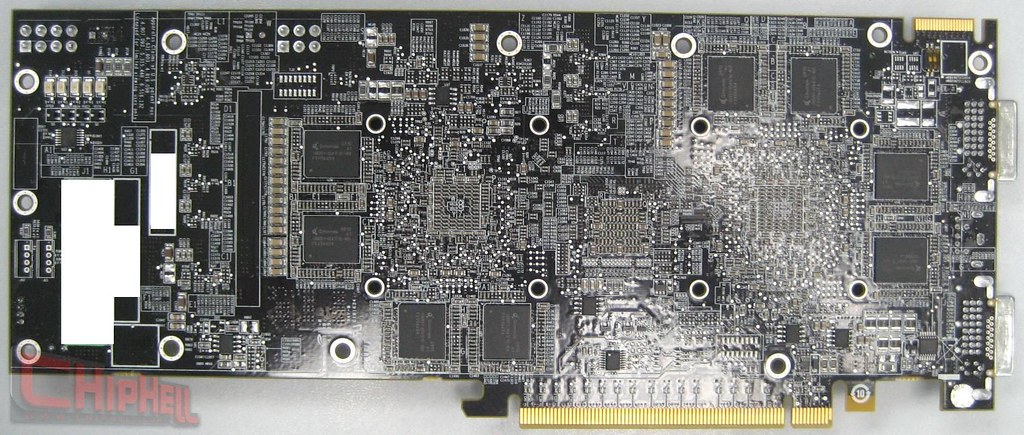Here is R700: http://img.hexus.net/v2/graphics_cards/ati/4850X/R7001-big.jpgI can't see why you'd need a chip between the two gpus? What's the point? Sure just as the normal pcie bridge (instead of the old pcie 1 one) this will do fine - 3 ports would be enough, however (communication is only 3-way...)
Look carefully between the two gpus. Its definitely there, looks smaller too. Also notice the arrangement of the components arranged horizontally between the two gpus in R680 and it is arranged vertically on the R700.
R680 (Back): http://www.techpowerup.com/reviews/HIS/HD_3870_X2/images/back.jpg
R680 (back with metal plate): http://www.techpowerup.com/reviews/HIS/HD_3870_X2/images/card3.jpg
R680 (front): http://www.techpowerup.com/reviews/HIS/HD_3870_X2/images/gpus.jpg




